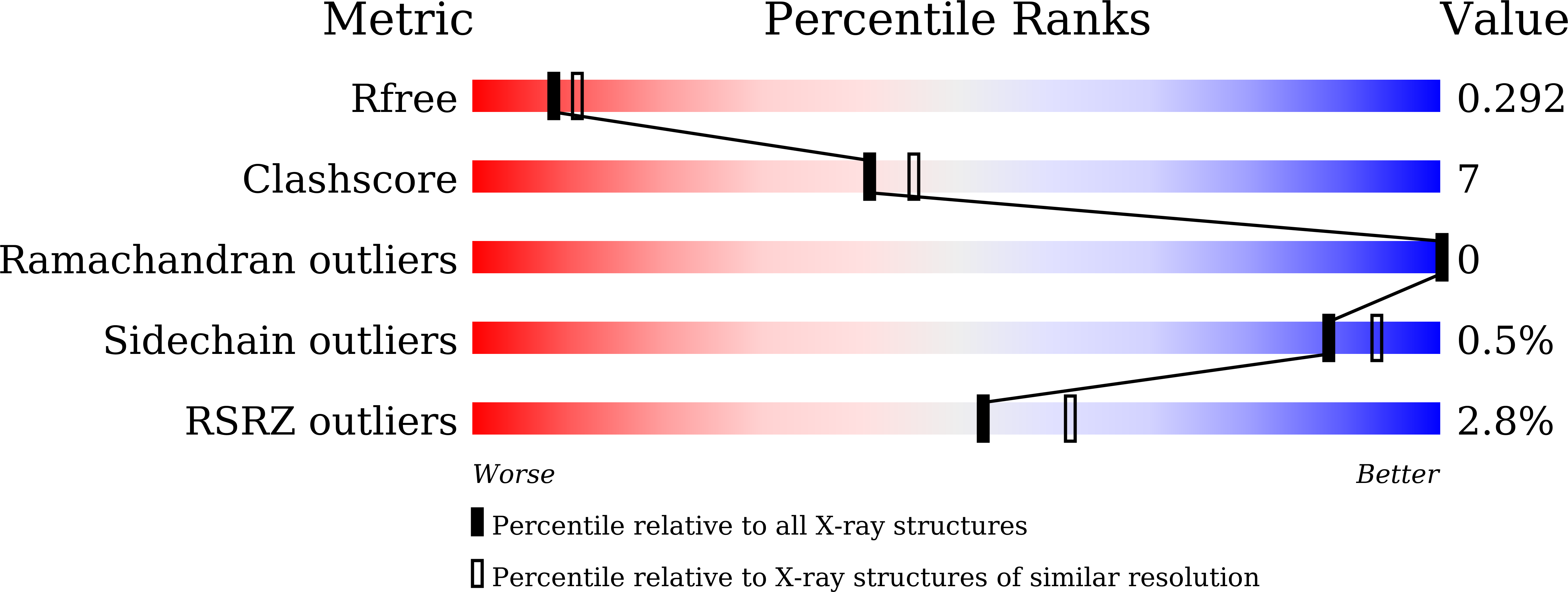Structural basis of the mercury(II)-mediated conformational switching of the dual-function transcriptional regulator MerR
Chang, C.C., Lin, L.Y., Zou, X.W., Huang, C.C., Chan, N.L.(2015) Nucleic Acids Res 43: 7612-7623
- PubMed: 26150423
- DOI: https://doi.org/10.1093/nar/gkv681
- Primary Citation of Related Structures:
4UA1, 4UA2 - PubMed Abstract:
The mer operon confers bacterial resistance to inorganic mercury (Hg(2+)) and organomercurials by encoding proteins involved in sensing, transport and detoxification of these cytotoxic agents. Expression of the mer operon is under tight control by the dual-function transcriptional regulator MerR. The metal-free, apo MerR binds to the mer operator/promoter region as a repressor to block transcription initiation, but is converted into an activator upon Hg(2+)-binding. To understand how MerR interacts with Hg(2+) and how Hg(2+)-binding modulates MerR function, we report here the crystal structures of apo and Hg(2+)-bound MerR from Bacillus megaterium, corresponding respectively to the repressor and activator conformation of MerR. To our knowledge, the apo-MerR structure represents the first visualization of a MerR family member in its intact and inducer-free form. And the Hg(2+)-MerR structure offers the first view of a triligated Hg(2+)-thiolate center in a metalloprotein, confirming that MerR binds Hg(2+) via trigonal planar coordination geometry. Structural comparison revealed the conformational transition of MerR is coupled to the assembly/disassembly of a buried Hg(2+) binding site, thereby providing a structural basis for the Hg(2+)-mediated functional switching of MerR. The pronounced Hg(2+)-induced repositioning of the MerR DNA-binding domains suggests a plausible mechanism for the transcriptional regulation of the mer operon.
Organizational Affiliation:
Institute of Biochemistry and Molecular Biology, College of Medicine, National Taiwan University, Taipei 100, Taiwan.















